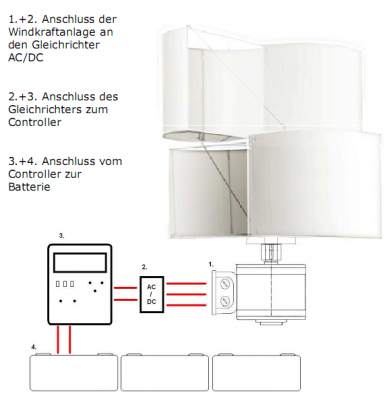Products & Services
Wind power plant ST, PT, CT & DT
May 28 2010 06:36

|
|
Other than the established companies in this industry that are aligned with their product lines to large plant installations like wind farms, aims GENERADOR E?licos TPM HighTech with their investments in the lower and medium performance segment of customers and applications such as:
In addition, find GENERADOR E?licos plants but also in the "repowering" of existing and the construction of new wind farms use. The plants of both GENERADOR E?licos find application in situations where previously only diesel-powered or solar generators could be used. They are also used as a source of alternative energy supply within existing networks, which can be fed back in such cases, excess energy into the grid. The generated electrical energy can be harnessed and deployed in several ways:
The main reasons for the GENERADOR E?licos of finding a lucrative market, are far-reaching, but are first and foremost is that the offer GENERADOR E?licos plants a much higher power output, so many of these applications are cost efficient. The overall smaller plants are like the facts of the landscape protection, excellent market response and wind farm operators and visual appeal of GENERADOR E?licos plants account as an added advantage. For wind turbines, there are two clearly defined market segments, which operate under entirely different reasons or criteria:
The cost effectiveness of modern wind turbines now makes it possible to use such systems as an inexpensive form of energy. Although this statement is based on economic efficiency of modern megawatt turbines in wind farms, this is indicated by the high efficiency of GENERADOR E?licos systems for installation at low and medium power segment reality. In developing countries, and areas with high economic growth and the resulting energy, the use of wind energy might also be the most advantageous solution when electricity costs alone are not decisive: in particular, small wind turbines can be installed very quickly and locally and also be used in areas which the network infrastructure generally poorly designed to be weak or not present. In countries in which the coverage of the state power utilities to cover only a portion of the population and now the power in these underserved areas, if any, is mainly on diesel generators, an enormous demand for wind turbines in the power range is from about 0.5 kW to 100 kW. Another argument for the use of small wind energy systems is the fact that the sites for wind farms with huge Retract-megawatt plants in developed countries are scarce and electricity from off-shore wind farms only at great cost to the network infrastructure brought to the consumers must be . Smaller plants can be built there, however, where the electricity is actually needed, so see the complete GENERADOR E?licos systems, the existing wind farms and therefore the other manufacturers of wind turbines and do not occur with these in a competition. Finally, it is much easier for a user to obtain building permits for the GENERADOR E?licos systems, if such is needed at all. Generador E?licos sells its systems both have their own sales activities and distribution partners, project engineers, architects, etc..
|





